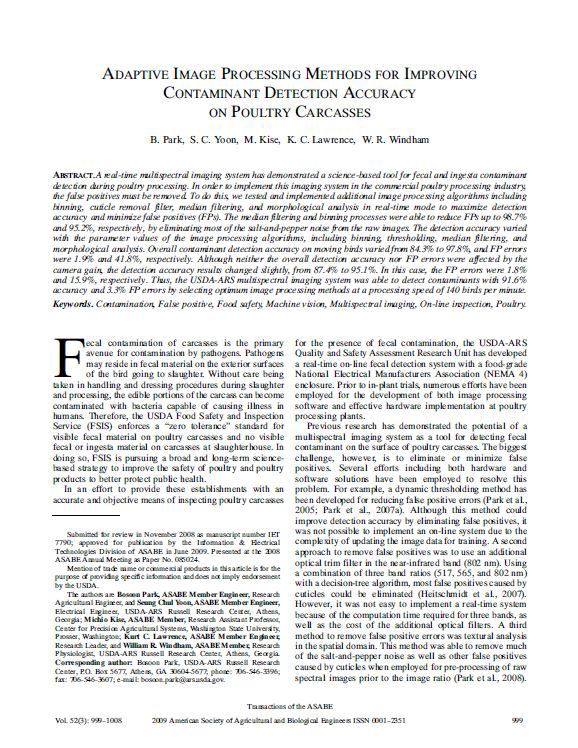Adaptive Image Processing Methods for Improving Contaminant Detection Accuracy on Poultry Carcasses
Title
Adaptive Image Processing Methods for Improving Contaminant Detection Accuracy on Poultry Carcasses
Date
Subject
Excerpt
A real-time multispectral imaging system has demonstrated a science-based tool for fecal and ingesta contaminant detection during poultry processing. In order to implement this imaging system in the commercial poultry processing industry, the false positives must be removed. To do this, we tested and implemented additional image processing algorithms including binning, cuticle removal filter, median filtering, and morphological analysis in real-time mode to maximize detection accuracy and minimize false positives (FPs). The median filtering and binning processes were able to reduce FPs up to 98.7% and 95.2%, respectively, by eliminating most of the salt-and-pepper noise from the raw images. The detection accuracy varied with the parameter values of the image processing algorithms, including binning, thresholding, median filtering, and morphological analysis. Overall contaminant detection accuracy on moving birds varied from 84.3% to 97.8%, and FP errors were 1.9% and 41.8%, respectively. Although neither the overall detection accuracy nor FP errors were affected by the camera gain, the detection accuracy results changed slightly, from 87.4% to 95.1%. In this case, the FP errors were 1.8% and 15.9%, respectively. Thus, the USDA-ARS multispectral imaging system was able to detect contaminants with 91.6% accuracy and 3.3% FP errors by selecting optimum image processing methods at a processing speed of 140 birds per minute.
Relation
Transactions of the ASABE
Volume 52, Number 3
pp. 999-1008
 An official website of the United States government.
An official website of the United States government.


